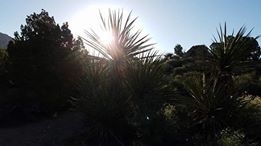The Lost City Museum, originally known as the Boulder Dam Park Museum, was built in 1935 by members of the Civilian Conservation Corps. The National Park Service created the museum to exhibit artifacts recovered from local prehistoric archaeological sites, most of which were flooded when the Colorado River was dammed to form Lake Mead. Previously, the ruins had been brought to the attention of the Governor of Nevada, James Scrugham, in 1924 by two brothers from Overton – Fay and John Perkins.
The Governor enlisted the help of noted archaeologist M.R. Harrington, then associated with the Museum of the American Indian, to direct the excavation of the sites before Boulder Dam was completed. Harrington recognized the significance of the sites and named them the Pueblo Grande de Nevada. Excavations began in 1924 and continued off and on until 1938. In the 1920s, the early and important archaeological finds were highly publicized and promoted. It was during this period that the somewhat romantic title of “Lost City,” was picked up by the popular press.
The National Park Service turned the museum over to the state of Nevada in the mid-1950s, when the name of the museum was changed to Lost City Museum. Now listed on the National Register of Historic Places, the museum is one of seven state museums, and has grown to include three exhibition galleries, a small screening room, a research library, and a museum store. Outdoor exhibits include a Native American pit house and reconstructed pueblos, which visitors may enter.
Pictures below are provided by contributors or supporters of this website. If you are interested in sharing your pictures of Nevada, please drop us a note.

Courtesy T. Turner – Cactus Sunrise